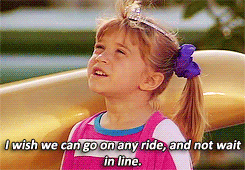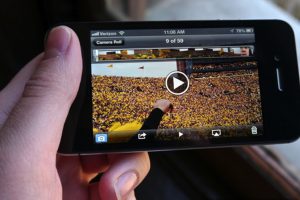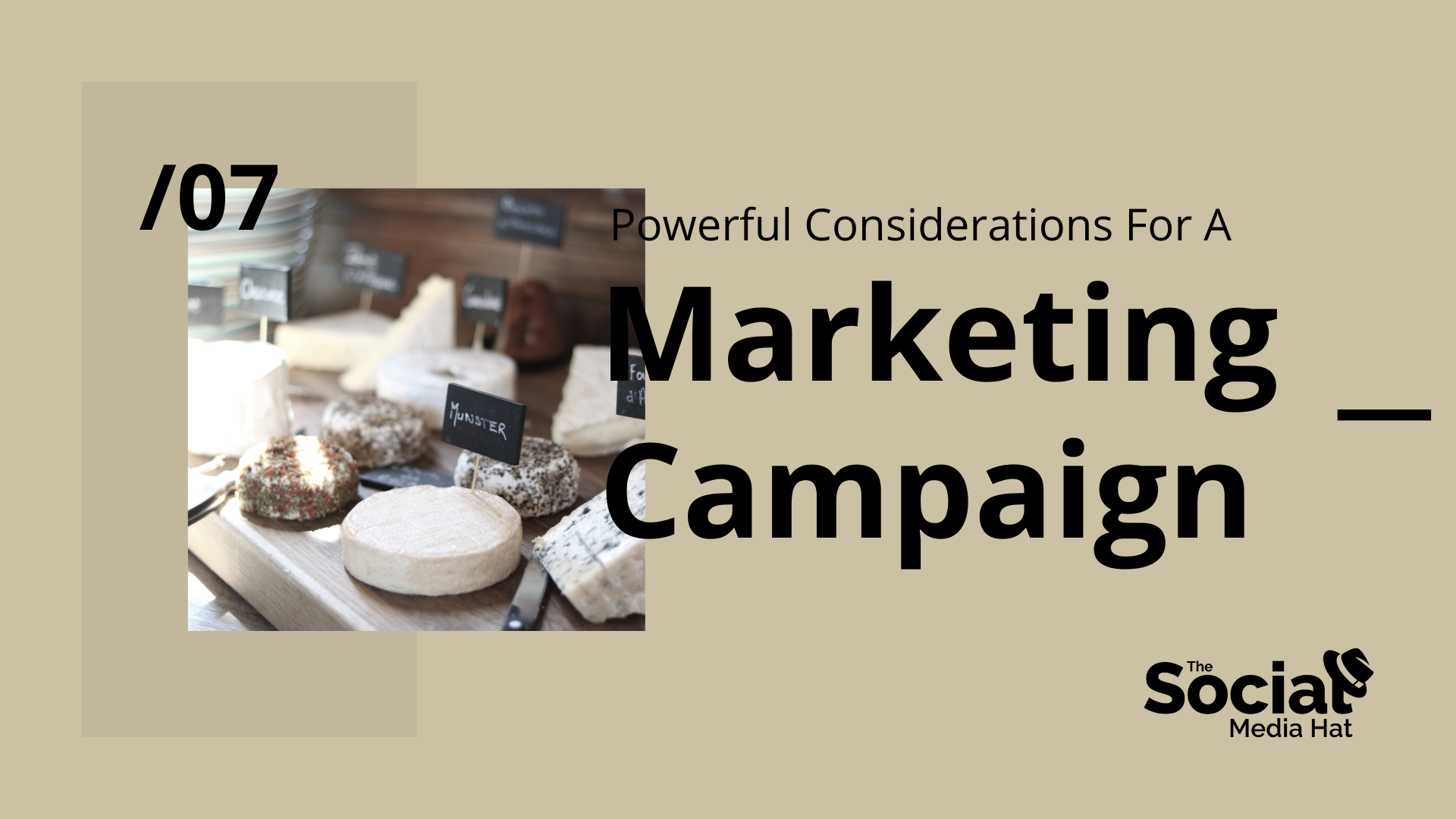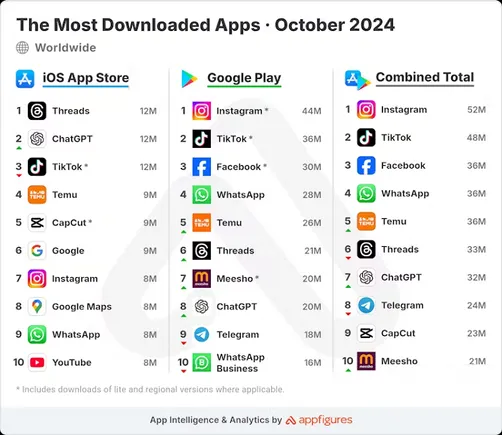Whether you’re launching a new product, or getting ready for an annual sale, you’re about to create a Marketing Campaign. And of course we want that campaign to be a success.
From 2014 – 2018, I was Chief Marketing Officer for a global company serving entrepreneurs. Every year we would run a variety of sales and campaigns, including a massive annual sale every December. As CMO, it was my role to manage the entire marketing team and these campaigns.
While these were big-budget campaigns that netted six-figure sales and results, the principles and processes that I am about to share work just as effectively for bloggers and small businesses.
In fact, I’m using my own techniques right now to launch a new product of my own, that I’m going to share with you in a moment.
Because you see, at the end of the day, a successful marketing campaign is all about communicating the right message to the right people at the right time. Sometimes you may not know exactly what’s truly “right” in those areas. You may have to guess and test and make determinations. But my goal here is to prepare you so that the next time you want to launch a product for your blog or advertise a sale on your service offerings, you can put together the best possible campaign.
As such, there are seven critical considerations for your marketing campaign plan. I suggest that you put these into a Google Document and use that as the starting point for assembling your campaign plan (in fact, every campaign that I run is done so from a Google Document that I can share with my team and collaborate on the schedule and assignments – I have an example that I’ll share with you in a bit).
Marketing Campaign Timing
The timing of your marketing campaign is the first important consideration. When are you going to schedule this campaign, and how does that fit in to everything else that may be going on that time?
What holidays will fall in or around your campaign? Will that have an impact on your target customer’s ability or motivation to purchase?
What other activities or events will be going on around that time? Will your audience be focused on, say, getting kids back to school (or dealing with kids home from vacation). Whenever possible, consider what’s likely happening in the lives of your audience and prepare accordingly.
Finally, what about your own business? When I was running those annual sales campaigns, it was an All Hands On Deck situation with lots to do and promote. That was not the time for folks to be taking extended vacation or leave, nor was it a good time to be beta testing new product features.
Even if you anticipate everything going smoothly, give yourself time (and grace) for hiccups to occur and the means to address them.
Audience Alignment
The second critical consideration has to do with making sure that you’re talking to the right people, and it’s so important, it’s the longest section of this article, so bear with me. Just like there would be no point in me trying to sell a swimming pool to someone who doesn’t own a back yard, there’s little point in you trying to get your campaign in front of buyers with little interest or ability to purchase from you.
Now, hopefully, your launch is far enough in the future that, if you haven’t already, you can begin to build an audience of targeted prospects. (If you haven’t, I have other ideas for you that we’ll get to in a moment, so hang in there.)
How do you build a targeted audience?
- Create blog content that answers highly relevant questions and share to social media.
- Create a Live Video show that talks about these topics each and every week.
- Create a digital asset (i.e. eBook) that prospects can download in exchange for their email address.
- Promote that content and lead generation asset via Facebook Ads.
- Identify and connect with influencers in your niche who have existing audiences you can reach.
Before you do any of those things, you need an Avatar. That’s a write-up of what your target audience looks like. Who are they? What are they concerned about? What are they trying to accomplish, and what’s stopping them?
You need to know those things so that you can “speak” to them in all your communication.
With that Avatar (or persona) firmly in mind, you can begin to create a content marketing plan that will bring in traffic and generate leads.
But what if you don’t have time to build all of that? What if you’re hoping to launch within the next month?
First, it’s worth considering whether your initial Launch Date is reasonable.
If you’re starting from scratch, it might be worth taking the time to build that audience before you have something to sell. But sometimes business considerations don’t make that possible, so in that case…
Build a Teaser Campaign.
Ever heard of Harry’s Razors? It’s OK if you haven’t… they’re an eCommerce shop that sells great shaving products to men. But they’re my favorite example of a teaser campaign because in just one week they managed to acquire 100,000 email addresses which contributed to the launch of a startup that now earns hundreds of millions of dollars in revenue.
How’d they do it? More importantly, how can you do it?
Just 3 steps:
Step #1 – Use a Dedicated Landing Page
You can have the most beautiful website in the world and the most gorgeous home page ever – it still won’t be good for this. Sales Campaigns need dedicated landing pages.
Anyone can come to your home page for any reason – sales, support, outreach, competitive research… accidentally. Therefore most home pages are designed to be everything to everyone. You’ve got standard navigation links and all kinds of information about who you are and what you do.
Which means there’s no set direction or call to action. There really can’t be.
But if you have a single Landing Page where you’re sending all of your campaign messages, you can refine and hone your message and give them one thing to do. That’s the key. Don’t let them get distracted by social icons or blog posts or anything else. There’s only one goal that you have for every visitor to this page and you have to make it super easy and apparent.
In this case, we want their email address.
So Harry’s created a gorgeous landing page that invited visitors to sign up to “Be The First To Know.” The page promised that something was coming and was decidedly vague about what that something was.
Step #2 – Provide An Incentive To Share
It’s nice to get individuals signing up for your list, but how do you grow beyond the 12 people that you know personally?
You have to offer them something. An incentive. And then make it easy for them to share and refer others to achieve those rewards!
Harry’s hit the perfect notes here. If you referred just 5 friends you’d get a free shaving cream (which is awesome, btw, I use it myself). With 10 referrals you’d get a free razor, and so on. All the way up to the “grand prize” of a year’s worth of free shaves for just 50 referrals.
Pretty awesome, right?
Now of course you’re going to need to think about what you can afford to give away and how this example applies to you. In the case of Harry’s, while there’s certainly a cost associated with everything they gave away, they’re also creating long-term, recurring customers each and every time. Razors, shaving cream – they’re all consumable products. Even with a year’s worth of razors, at some point I will run out and need more.
More importantly, the different levels of achievement created a gamification aspect to the program. Anyone with an ounce of competitiveness is going to want to get to that 50 referral level.

From Harry’s perspective, if I hit that level they owe me a supply of razors – yet their razors are so good they typically last a month or more, so they’re only out a dozen or so. Just $24 retail. $24 for 50+ interested prospects is a steal.
So how do you get all of that rolling?
Step #3 – Use Email Outreach To Start
Once you have that initial landing page, you need to get people going to it. And again, this is where Harry’s provided an incredible case study.
They had 0 subscribers to start. They didn’t seed the list or buy emails in any way.
They just emailed their personal friends and family. Keep in mind, Harry’s only had twelve employees at this stage – so those twelve people’s emails resulted in 100,000 subscribers using this system.
Let that sink in.
Even if it’s just you, you can do this. You can come up with incentives, create a landing page and referral system (there are plugins and services for that), and you can ask your friends and family to get that initial ball rolling.
Which no matter how soon you have scheduled your Launch, you can start to create buzz and interest and a targeted list in advance. You just need a plan (which we’ll get to in a moment.)
Price Point
How much you’re going to charge for your product shouldn’t be a random dollar amount spun from the ether. Ideally it would be based on a combination of competitive research and target market surveys.
Take a look at similar products on the market and make note how much they cost and exactly how they differ from yours. Ideally, you’d find that the competition is all priced higher than where you want to be and offering less in exchange. Price is a powerful motivator so that’s a golden opportunity to compete.
Of course it’s OK not to be the cheapest, that just means you need to focus on a different USP (Unique Selling Point).
Which means you need to talk to your target prospects. Ideally you’d conduct 1:1 interviews and include opportunities for them to provide input on your product, as well as explain how much they’d be willing to pay for it.
That’s time-consuming though so in a pinch, conduct a survey.
Create an easy Google Form and use it to explain what your product is and does, the features and benefits, and ask your email list what they’d be willing to pay for it. The answers might shock, but it’s better to learn before your launch if your price point is out of whack.
Solution
No matter what it is that you’re selling, you have to understand what it is that you’re actually solving for your customers and focus on communicating that.
When I sold swimming pools in the mid-90’s, I wasn’t selling thick, corrosion-proof pool walls, or powerful filtration motors. I wasn’t selling hassle-free chemical systems and I wasn’t even selling beautiful liners or exteriors.
Do you know what I was selling?
Happiness. Just like Mickey Mouse and the Magic Kingdom.

My job was to help families envision how a swimming pool might turn their backyard into an Oasis. A place where the family could come together and create happy memories without having to go out and fight traffic and crowds and outrageous food prices.
Happiness (along with security and a few other things) is a benefit to owning your own pool and creating an outdoor living space. It’s that benefit that I needed to focus on first, and let the various features and technical aspects of the pool get sorted out later. Understanding that is what led to me being a top salesman my first year!
So you have to determine what benefits your product or service offers, and sell those as a solution.
Marketing Campaign Length
Next, let’s think about how long you’re going to let your marketing campaign run for. Certainly if there are external factors, such as a specific event or holiday that’s coming up fast, this may not be up to you. But let’s assume for the moment that you have the flexibility to start and end your campaign at some date in the future that’s entirely your choice.
How long should that be?
Let’s be clear: there will be an end date. Campaigns cannot run into perpetuity. There’s only so much bandwidth you can devote to the promotion, for starters, and an end date will create a sense of urgency for your audience.
Act now, or miss out on 50% off.
One factor I always considered is what we wanted to do during any given campaign, and what our goals were. Do you want to broadcast a series of Facebook Lives or webinars? Would you like to send a series of emails? Are you hoping to bring in $XXX,XXX in sales? How much time do you need to properly execute all of that?
You may need to do a little research to determine the optimum frequency for doing things like live video or email. It’s usually not multiple times a day, so that will immediately cause you to give yourself more than a few days.
Also, consider the typical Time To Purchase for your product if it’s an existing product, or at least how much time you think someone might need to make that decision. Note that the more expensive your price, the longer it typically takes someone to buy.
An additional option here is to extend your campaign for X days after the initial deadline. It’s a nice way to capture those who simply missed the original deadline or even the entire campaign (it happens), as well as give those who chose not to buy the first time around a reason to re-consider.
If you think about all of the things that happen to you in any given day, it’s easy to see that every one of the people in our respective audiences have a thousand things going on and a thousand distractions from making the decision to purchase that we want them to. Sometimes it’s just not the right time for them, and that’s OK. But sometimes that second or third (or fourth) email is the one that catches them at the right time and place and mindset.
And that’s why it’s so important to have a plan for your entire marketing campaign and to continue to execute it through til the very end. You can always make adjustments on the fly and come up with new, creative tactics. But the one thing you cannot do is go back in time and send additional emails or broadcast additional live videos after the campaign has already begun.
Inclusive Imagery
This is important, folks.
Make sure that any imagery you use throughout your marketing campaign and materials is inclusive in nature, meaning that you make every effort to be as representative as possible. Unless you’re specifically targeting millennials with your product or service, be sure to depict people of all ages. While not every image you use needs to show every possible race and ethnicity, you should strive to make your materials as diverse as possible.
Is that more work? You bet! But it’s worth it. Your audience today expects to see diversity in the brands they choose to work with.
If possible, use real images of your customers. If you haven’t already collected such images, reach out to some of your customers and ask if they’d give you permission to use them. The importance of using high quality imagery cannot be overstated, but this applies both to the resolution of the image as well as the content.
What’s Your Plan, Man?
My good friend Benny Franklin famously said, “A failure to plan is a plan to fail!” And of course it’s famous because he was spot on. If you try to launch a product or an important sale and have no plan for how you’re going to do it, you might as well not waste your time.
Seriously.
Launches and Sales are a LOT of work! The last thing you want is to waste time spinning your wheels and having nothing but splatters of mud to show for it.
It might seem like busy-work at times, but documenting in advance everything that you need to do, delegating and assigning tasks if you have a team, and putting a calendar of events and activities in place will make sure that your launch goes as smoothly as possible.
Let me put it this way:
Every marketing campaign will have hiccups. Every launch will have its up’s and down’s. You can try to navigate those heady waters by yourself if you want to, but why not put a guide and compass in place to help you?
That’s where the Marketing Campaign Planner comes into play.
This 20-page downloadable, printable guide is everything you need to not only keep track of your campaign tasks and events, but actually learn how to create a campaign in the first place!
I walk you step-by-step through my process of putting together a winning marketing campaign, and I even give you a behind-the-scenes look at how I assembled and mapped out the campaign for this very planner!
Are you launching a new product soon? A book, a course, a new line of products? You simply can’t afford to proceed without putting a plan in place. And the best part is, it’s not going to cost you hundreds to get started.











